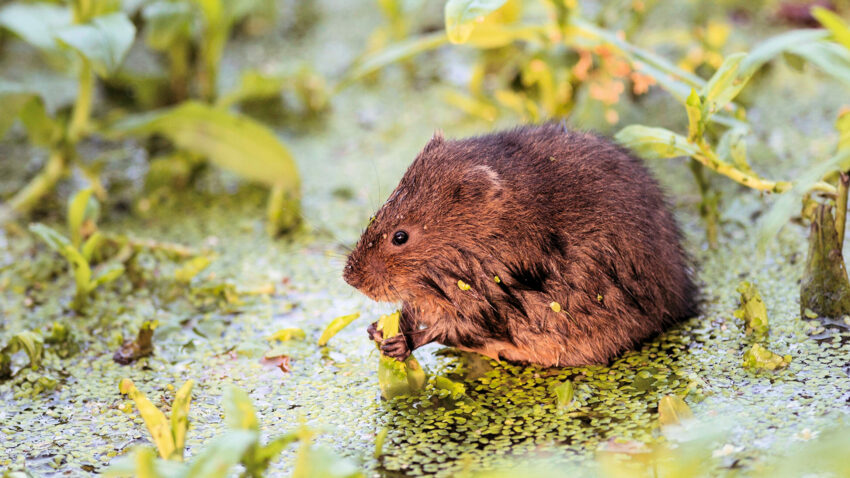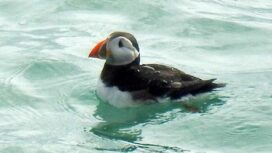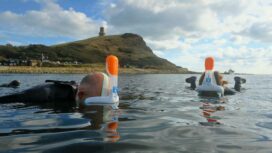Watercourses in Purbeck including Corfe River, may be offering a rare glimmer of hope in the tragic tale of Ratty – the loveable water vole from Kenneth Grahame’s The Wind In The Willows.
Local residents are being urged to sign up as volunteer water vole wardens to find evidence that the Purbeck countryside is leading a comeback for the much loved mammals, which are now close to extinction in much of Britain.
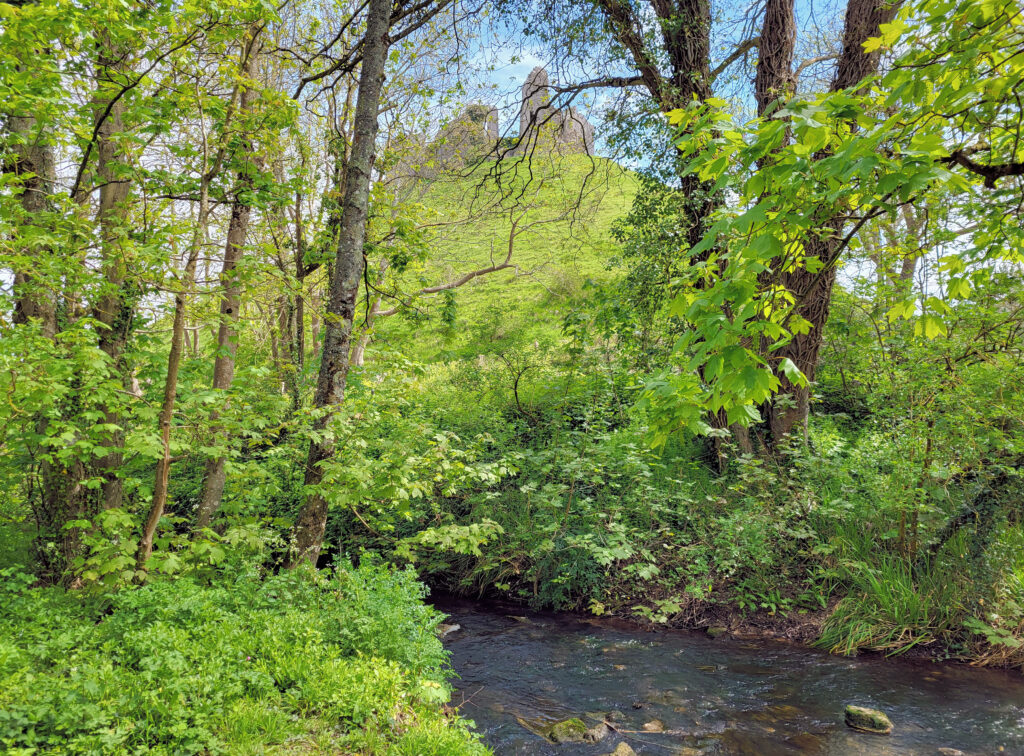
The River Corfe recorded families of water voles in the 2022 survey
90 percent of water voles wiped out
In just a few decades up to the end of the 1990s, about 90 per cent of the water vole population in Britain was wiped out, mostly by American mink which escaped into the wild from fur farms.
It was the worst decline of any British mammal in the wild and just 20 years ago there were serious fears that Ratty would become completely extinct in our countryside.
But encouraging signs on the rivers Corfe, Frome and Piddle as well as in Little Sea at Studland suggest that the water vole population may be heading for a mini revival in Purbeck, and local nature lovers are being asked for help to find proof.
Volunteers are being asked to adopt a 500 metre stretch of a river, stream or even ditch near their home and look out for evidence of water voles, from footprints and burrows in the riverbank to feeding signs and droppings.
The People’s Trust for Endangered Species (PTES) is hoping to build up a picture of the state of the water vole population in Dorset and further afield until the middle of June 2023, as the little creatures become more active along our riverbanks.
And they are hoping that the waterways in Purbeck can return a real success story following on from several sightings of water voles near Corfe Castle and Wareham in 2022.
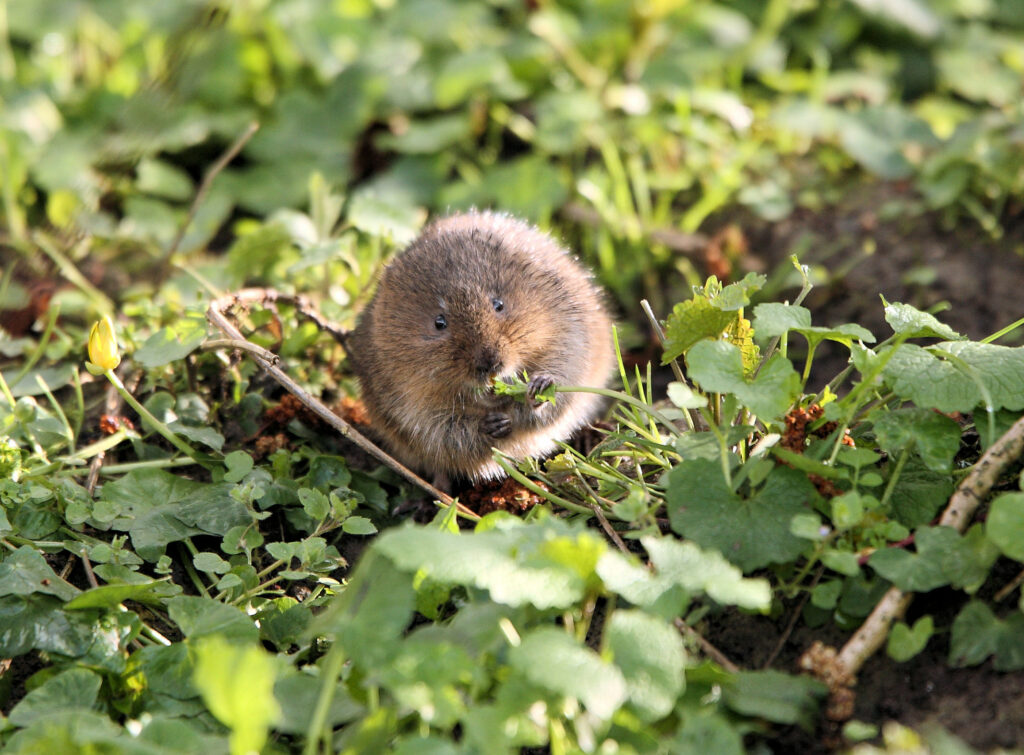
A water vole feeding on the river bank, now an endangered species
Listen out for the plop of a water vole
Emily Sabin, water vole officer at PTES, said:
“The best known water vole is Ratty from The Wind in the Willows, but despite being so well known from the books, not everyone has seen a water vole, or even heard one – they have a very distinctive ‘plop’ sound as they jump into the water when people approach along a river bank.
“They have been around since the last Ice Age, a truly iconic species which plays a huge part in the health of our river systems in the UK.
“But they are listed as endangered on the red list for British mammals and still face extinction in places thanks to habitat loss and predation from non native American mink.
“There is some evidence that they are reviving in some areas like Purbeck where water quality is improving and where otters, which help to drive out mink, are returning to local rivers.
“But these are pockets across the UK and we need to link up those pockets and restore their habitat, and that is where we could do with help from local residents.”
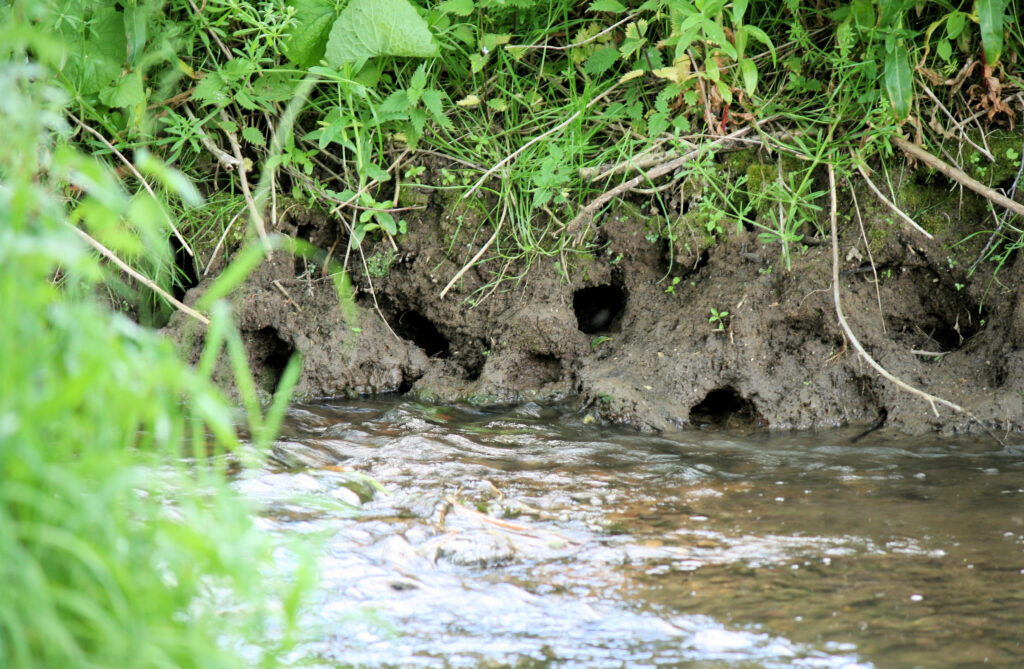
Water vole burrows can be easier to spot than the secretive creatures themselves
Zoom meetings to teach the signs of a sighting
Volunteers are being asked to register as water vole wardens on the PTES website where online training, including Zoom meetings, will help teach them how to spot signs of water vole activity.
This could be from spotting their holes in the riverbank, finding feeding sites, hearing the sound as they leap into the water, or finding their droppings – water voles have communal toilets and their droppings are easy to identify by their shape, like tiny brown tic tac mints.
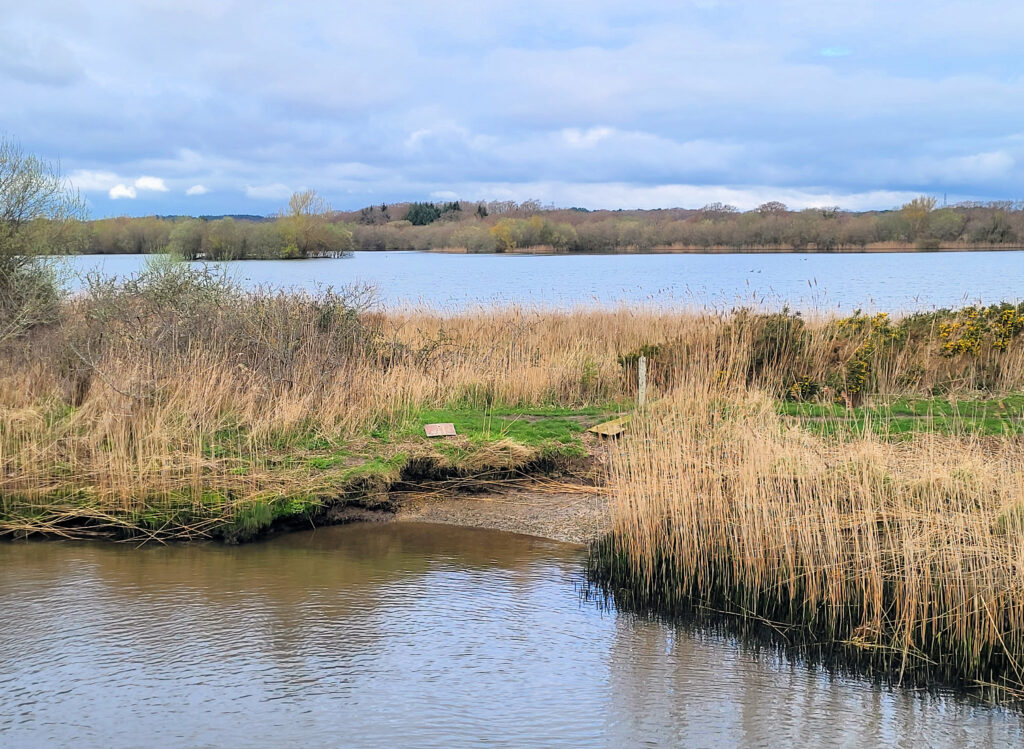
The River Frome at Wareham is also a prime site for water vole activity
Register new sites on the Frome and Piddle
PTES spokesperson Adela Cragg said:
“A site near Corfe Castle was surveyed last year and water voles were present, which was brilliant.
“If that site, and others nearby, could be surveyed again this year that would be great, it’s important for PTES to gather annual data to see how populations are changing so any help with this from your readers would be much appreciated!
“There are 15 pre-selected sites available to survey in Dorset but readers can register a new site if there’s a waterway closer to them. So if someone lives near the Rivers Piddle or Frome for example, they could register a new site along either river.
“Even if water voles aren’t seen at these sites, it’s still important that the sites are surveyed if possible to see if there is anything wrong with the habitat and whether PTES can perhaps work with the farmers to help put things right.”
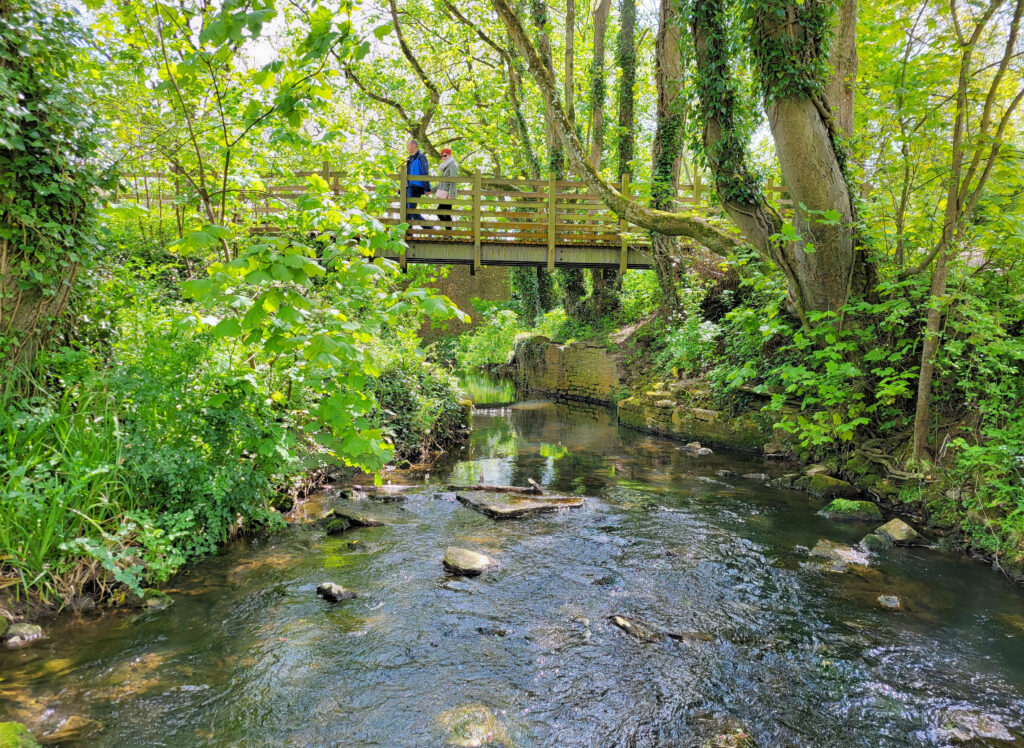
The River Corfe needs volunteer water vole wardens right through the village
Feeding on grass stalks held in their paws
Water voles are the largest species of vole in Britain and are sometimes mistaken for brown rats, which can be found in a similar habitat. They are also sometimes commonly known as the water rat.
Water voles have glossy brown or black fur and a blunt muzzle with small, black eyes. Their ears are rounded and almost hidden, and they have a dark, slightly furry tail.
They are mostly active during the day, sitting on their hind feet and feeding on grass stalks held in their front paws. If they are disturbed, they will dive into the water with a characteristic plop and when they swim, their head and back will be visible.
Populations of water voles declined after World War II when a change in farming in the 1940s and 50s caused the loss of habitat, but numbers went into a tailspin during the 1980s and 90s as American mink spread through British rivers.
The water vole’s usual defence of diving underwater and kicking up a screen of dirt or running into their burrow was no use against mink, which can fit into water vole burrows and wipe out entire colonies.
Mink are currently being controlled on many waterways across Britain and PTES hopes that this will alleviate the pressure on many local populations of water voles.
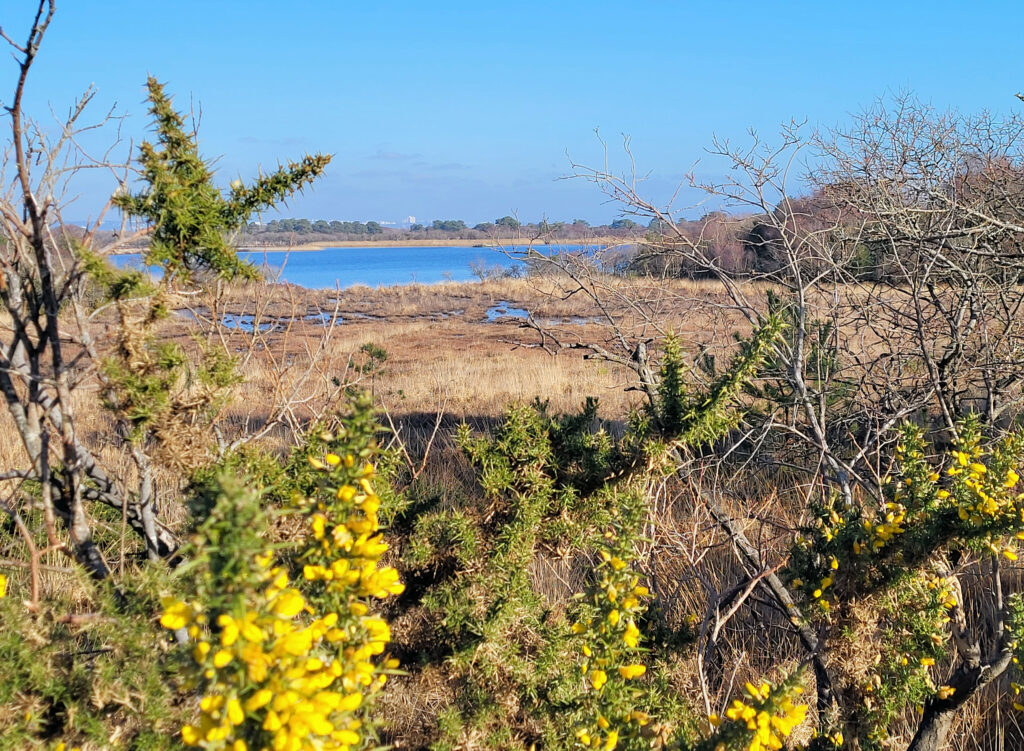
Water voles have also been spotted at Little Sea in Studland in the past
“More help is always needed!”
Emily Sabin added:
“Last year 216 sites were surveyed, with 85 showing signs of water voles, building on data from 2021 when 116 sites were surveyed with 47 indicating water vole presence.
“We really hope even more people can take part this year to help us further understand how water voles are faring.
“We have hundreds of fantastic volunteers who survey water voles for us every year, but given the severe decline water voles have experienced, more help is always needed!”
Further information
- Sign up as a water vole warden at the PTES website
